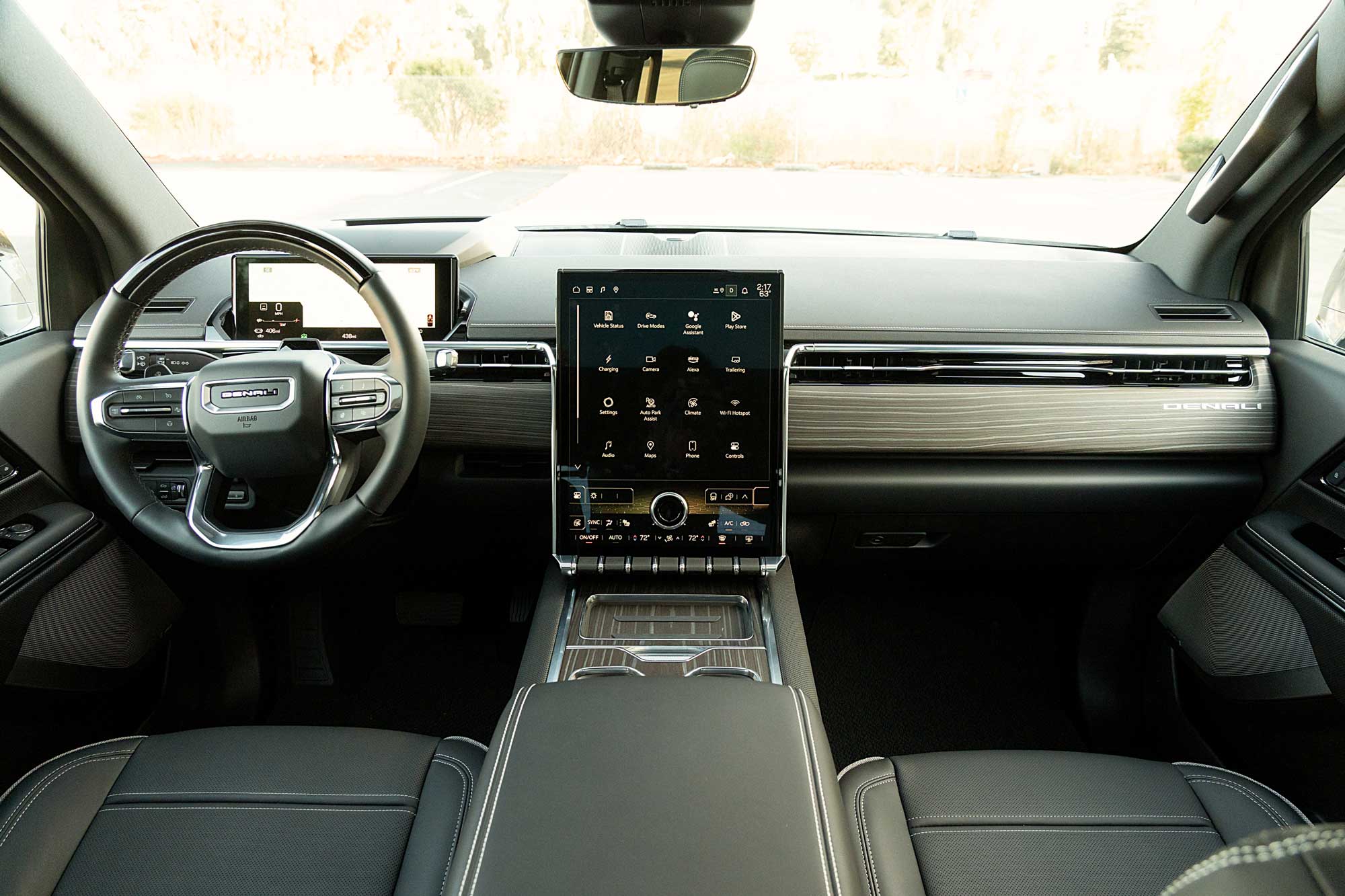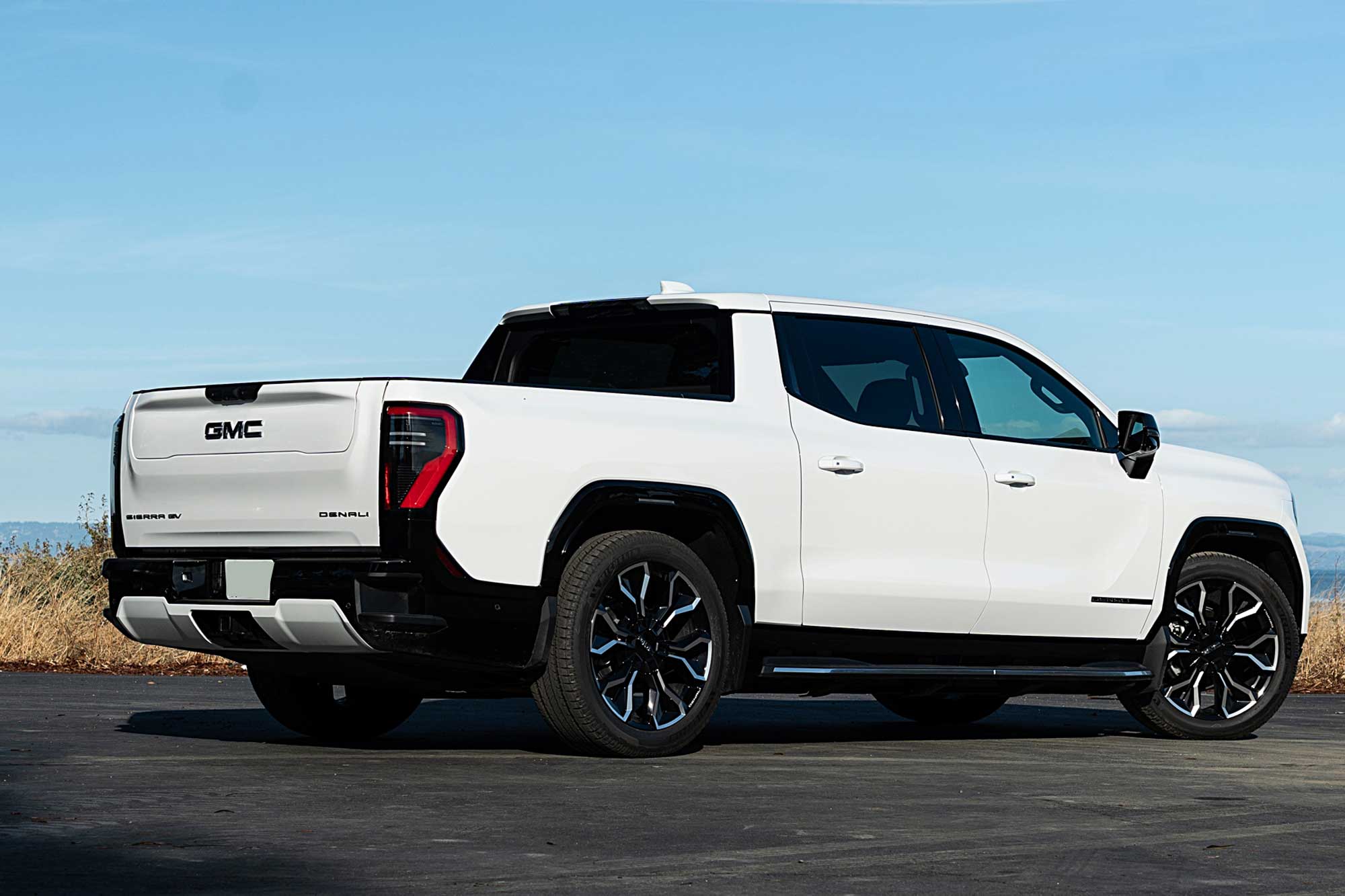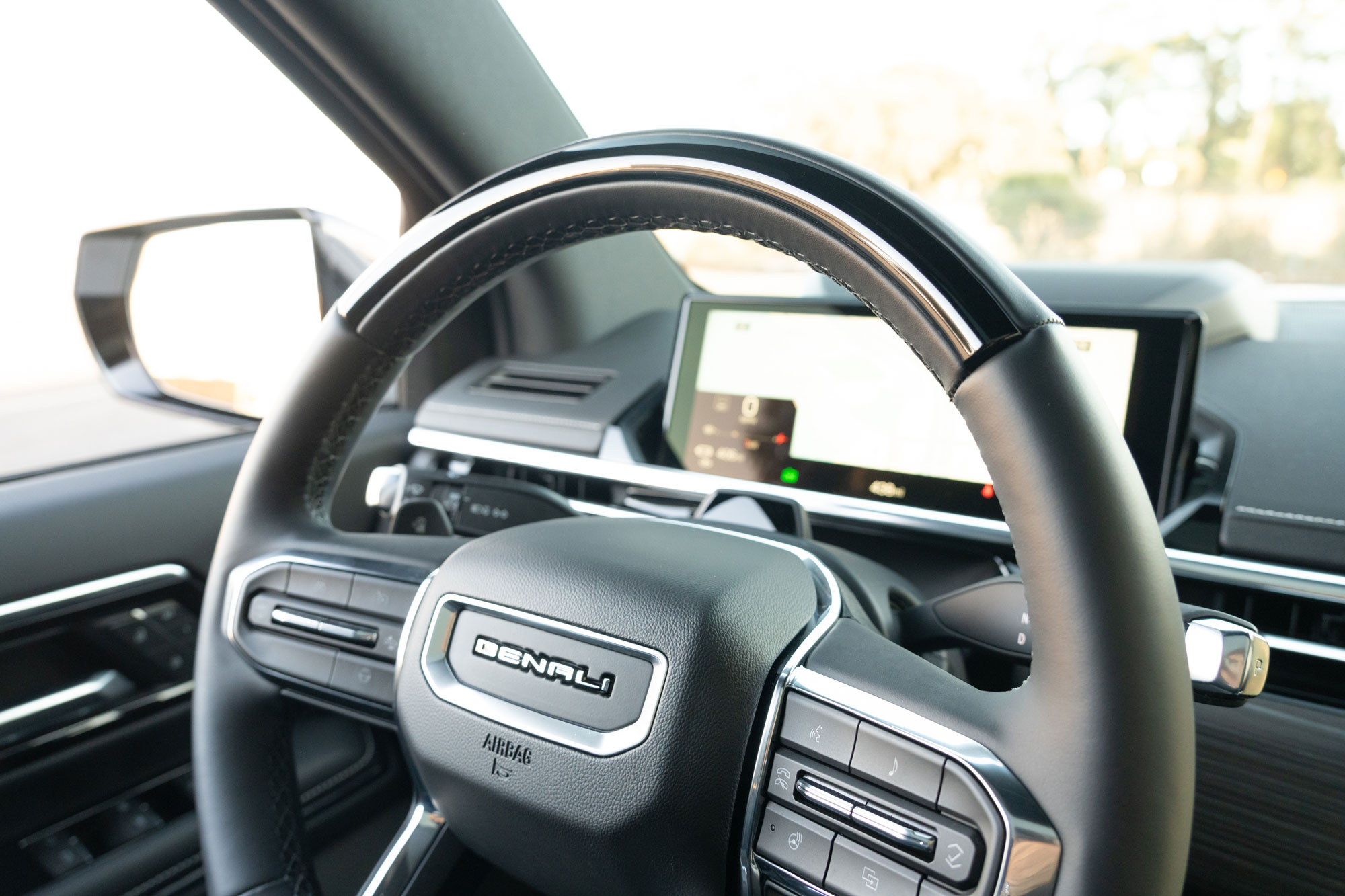2025 GMC Sierra EV Denali First Drive Review
The Sierra EV Denali may be a slightly fancier Chevy, but it's still worth your attention.
 Tim Stevens
Tim Stevens
That's right. GMC sells two electric trucks, and the Sierra EV Denali is the less expensive one, tucked into the lineup under the massive GMC Hummer EV. Still, despite being something fresh for General Motors' Professional Grade brand, it shares so much with the Chevrolet Silverado EV that it can be hard to tell the two apart.
One difference between the Chevy and the GMC is the Denali's premium positioning. Where the Silverado is available in a less expensive commercial-grade specification, the upscale Sierra EV Denali's starting price is about $90,000 — but it comes with a selection of features you can't get on any other Sierra.
 Tim Stevens
Tim Stevens
The Sierra EV Denali Is New Yet Familiar
Take a look from the side, squint a bit, and it's easy to mistake the GMC Sierra EV for a Silverado EV, though the GMC has different styling. These two trucks share more than a little under the skin, too, featuring the same vehicle architecture, platform, batteries, and motors.
The Sierra EV Denali's standard dual-motor drivetrain delivers up to 760 horsepower and 785 pound-feet of torque. GMC stocks the truck with your choice between two big battery packs. The smaller option is the Extended Range pack, GM-estimated for 390 miles, while the Max Range battery pack does a remarkable 460 miles on a charge. The charging rate is impressive, too. The Sierra EV is compatible with 800-volt DC fast charging at up to 350 kilowatts (kW), meaning it's capable of adding 100 miles of range in approximately 10 minutes.
The Denali trim comes standard with many of the same features found on various Silverado EV trims. These include an adaptive air suspension, four-wheel steering with a Crabwalk function (Sidewinder in the Chevy), an 11 cubic-foot front trunk, the trick MultiPro tailgate, and the even more unusual folding Midgate, which helps extend this Crew Cab's bed to measure up to 10 feet, 10 inches.
 Tim Stevens
Tim Stevens
In addition, an optional Power Station Pro system enables Sierra EV owners to access the truck's battery power to export up to 10.2 kW of electricity. You can also pair the truck with a bidirectional GM Energy PowerShift Charger, and it can power your whole house in the case of an outage.
So, what's truly new and unique about the Sierra EV Denali? The styling is subtly different and less futuristic looking than the Chevy, which gives the Sierra a more traditional look. But only slightly. That body-colored front end differentiates it from a typical chrome-bedecked truck.
The most significant differences between the Sierra and Silverado are inside. Both interiors are roomy and well designed, but the Sierra EV offers a higher quality of materials, with open-pore wood on display across the cabin and some clever design features, such as a wireless charging tray that tucks into the dashboard, revealing a second giant storage cubby ahead of the armrest.
That said, you can find lesser-quality plastic and rubber without much exploration. While they're durable materials, they're not necessarily in keeping with this machine's high manufacturer's suggested retail price (MSRP).
 Tim Stevens
Tim Stevens
The 2025 Sierra EV Denali Offers Big Power
For this review, I evaluated a 2025 Sierra EV Denali Max Range, which not only had the highest MSRP at $100,990 but also the greatest weight due to the bigger battery pack. That price includes a hefty $2,095 destination charge.
Despite that heft, the Sierra EV Denali supplied noteworthy acceleration in its maximum power mode. Tap on a picture of a big Thor's hammer in the vehicle settings, and you unleash the truck's full 760 horsepower.
Find a clear, wide stretch of asphalt before engaging this mode because the Sierra EV is a handful under full acceleration. With all four tires scrabbling for grip, it tends to meander under full thrust. GMC's claimed zero-to-60-mph acceleration time of 4.5 seconds is a nice party trick, but given how heavy the truck feels, it's not one you're likely to sample more than once.
Thankfully, the truck is far more pleasant to drive when your foot isn't flat on the accelerator. The standard air suspension does a great job absorbing the worst of the road's imperfections despite the 24-inch wheels, giving the Sierra EV enjoyable ride and handling characteristics, even on narrow and twisty roads.
 Tim Stevens
Tim Stevens
The rear-wheel steering system helps in the handling department and drops this truck's turning radius down to 42.2 feet. That's nearly 6 feet tighter than a Ford F-150 Lightning, enabling this truck to execute tight U-turns and slip into spaces in crowded parking lots.
You can get all those features on the Silverado EV, too. But there's one area where the Sierra EV is measurably improved: noise. Predictably quiet as an EV, the GMC seems more hushed on the highway than the Chevy. There is noticeable wind noise from those giant side-view mirrors, but otherwise, it's serene inside despite the bluntly shaped outside.
Quiet, nimble (for its size), and quick, the Sierra EV is capable, too. It boasts a maximum tow rating of up to 10,500 pounds and can haul a payload of up to 1,350 pounds.
 Tim Stevens
Tim Stevens
Super Cruise and Android-based Infotainment
It's no surprise that this technologically advanced truck is also loaded with high-tech infotainment and safety features. The hallmark is the latest version of Super Cruise, a hands-off highway driver-assistance system.
During my evaluation, Super Cruise kept the Sierra EV confidently moving through traffic, centered in its lane, and initiating lane changes on its own when gaps in traffic allowed. The only time Super Cruise failed me was in the early morning hours, driving into the California sun, when the sensors couldn't make out the lines on the asphalt. It simply refused to engage until the road turned away from the glare.
 Tim Stevens
Tim Stevens
On the infotainment side, the highlight is the massive 16.8-inch touchscreen display that would look disproportionately huge in any other vehicle but fits in quite nicely here. It runs GM's latest software, a heavily customizable version of Android Automotive. You can drag and drop shortcuts for commonly used controls such as backup cameras or drive modes to the top of the screen, while on the bottom, features for the climate control and other menu shortcuts remain static for easy locating.
Google Maps, Google Assistant, Google Play Store, and various other Alphabet-related services are nicely integrated, which is extremely helpful if you're an Android user. But if you're not, you may find things a bit harder to accept, thanks to GMC's omission of Apple CarPlay. There's no Android Auto either, so, despite this truck being able to charge your phone wirelessly, you're stuck streaming via Bluetooth any media that isn't available through the Android Automotive ecosystem.
 Tim Stevens
Tim Stevens
A Good Truck Made Slightly Better
The Chevrolet Silverado EV has plenty going for it, and GMC's Sierra EV Denali raises the bar a bit higher. While improved interior appointments and a slightly higher degree of fit and finish don't add much in the way of functionality, plenty of people like their trucks with a bit more luxury.
The Sierra EV Denali is a well-rounded package for those willing to pay upward of six figures for an electric truck. However, anyone looking for something even more premium with a distinct lifestyle angle may be better satisfied with the Rivian R1T. And nothing makes a statement quite like a Tesla Cybertruck.
GMC provided the vehicle for this 2025 Sierra EV review and paid for airfare, lodging, and meals during the evaluation period.
All vehicle pricing includes MSRP plus destination charges (set at the time of publication), and will be rounded to the nearest thousand.
Written by humans.
Edited by humans.
 Tim Stevens
Tim StevensTim is a freelance automotive and technology journalist with more than 25 years of experience. He is a frequent contributor to major domestic and international online, print, and broadcast news outlets, sharing his insights and perspectives on everything from cybersecurity to supercars. Tim also serves as a juror for the World Car Awards and regularly acts as speaker and moderator at major industry events such as CES, Web Summit, SXSW, NAIAS, and AutoMobility LA. He formerly served as editor-at-large and vice president of content at CNET. Before that he was editor-in-chief of Engadget and editorial director at AOL Tech.
Related articles
View more related articles